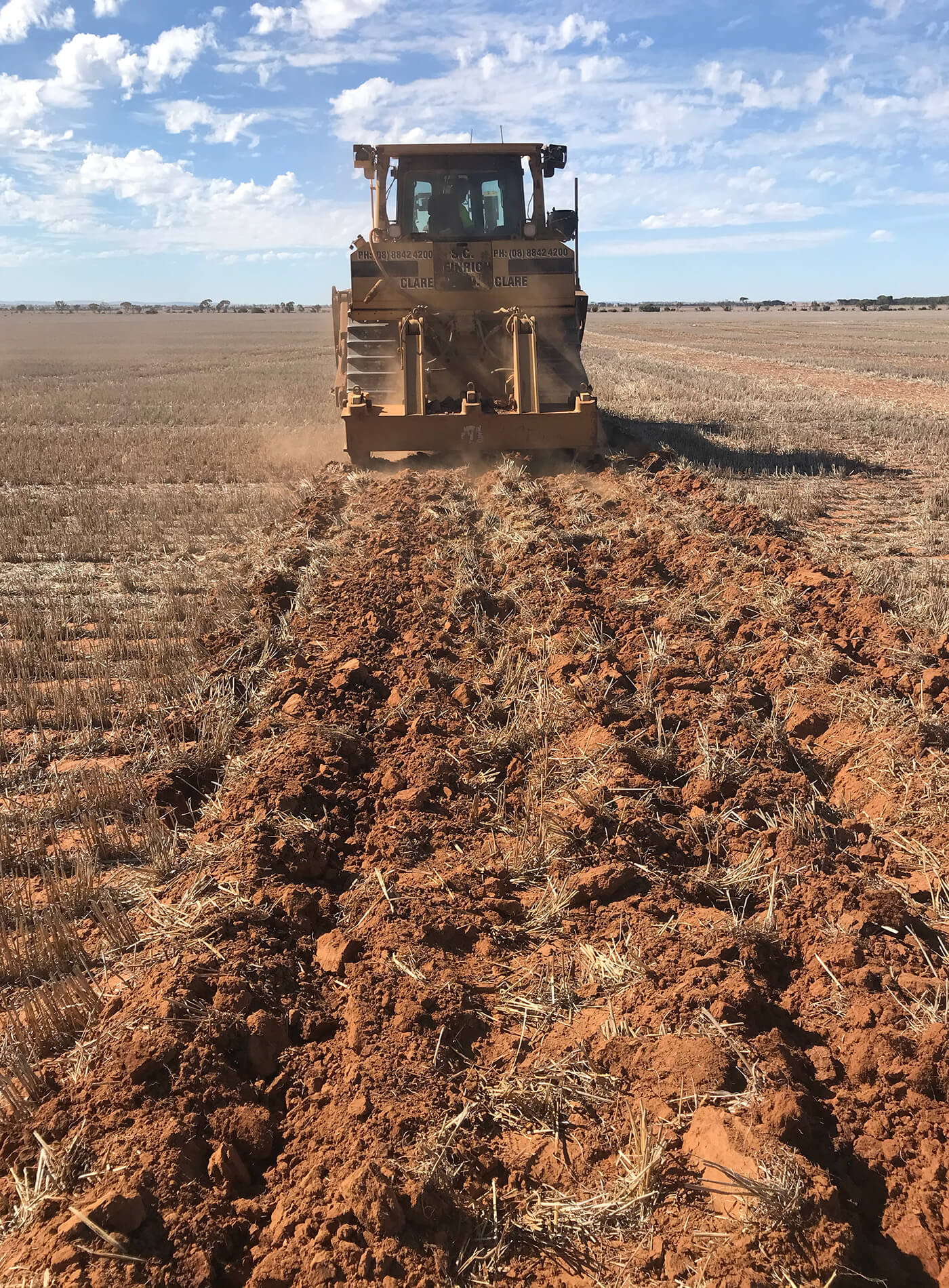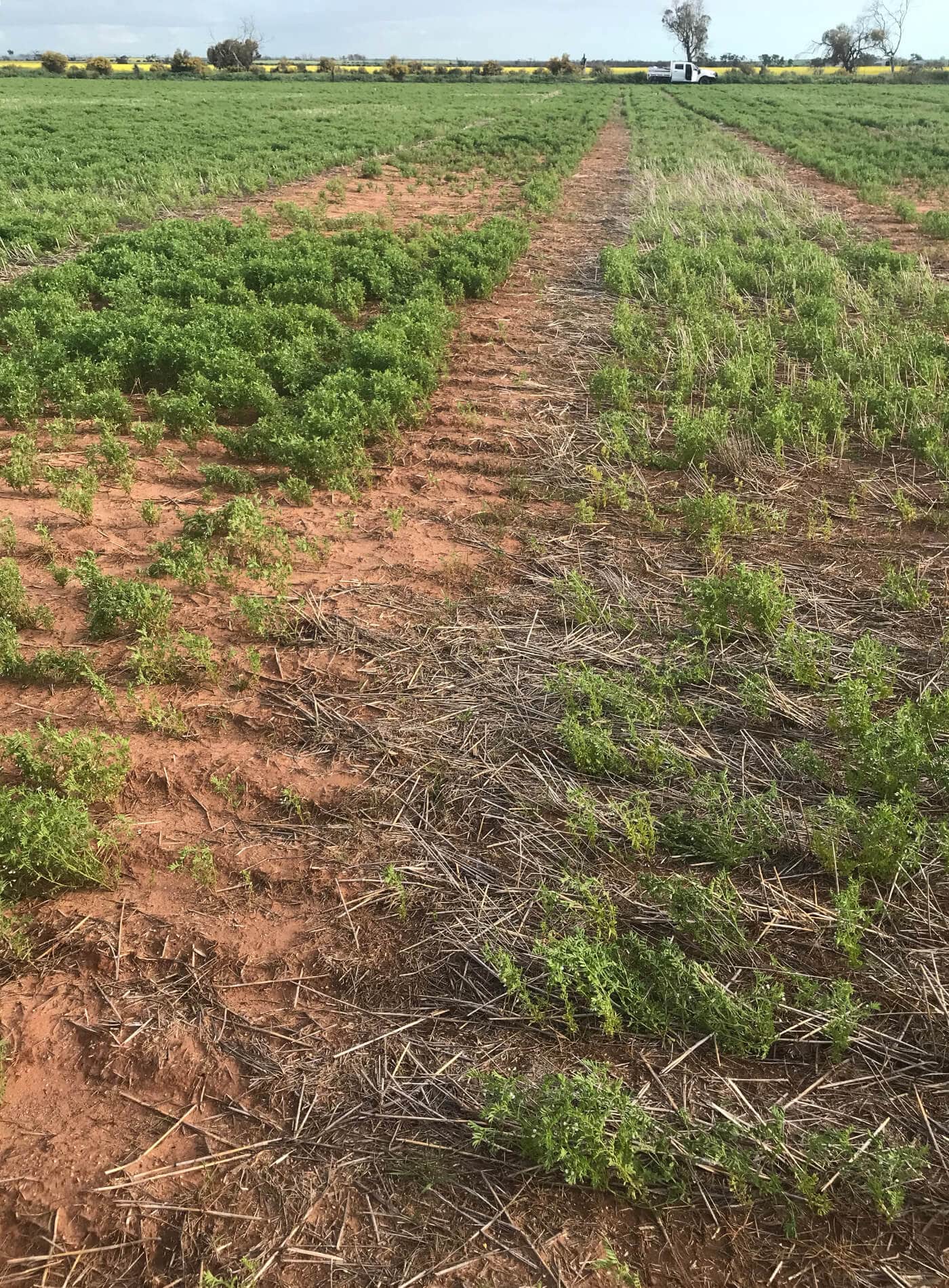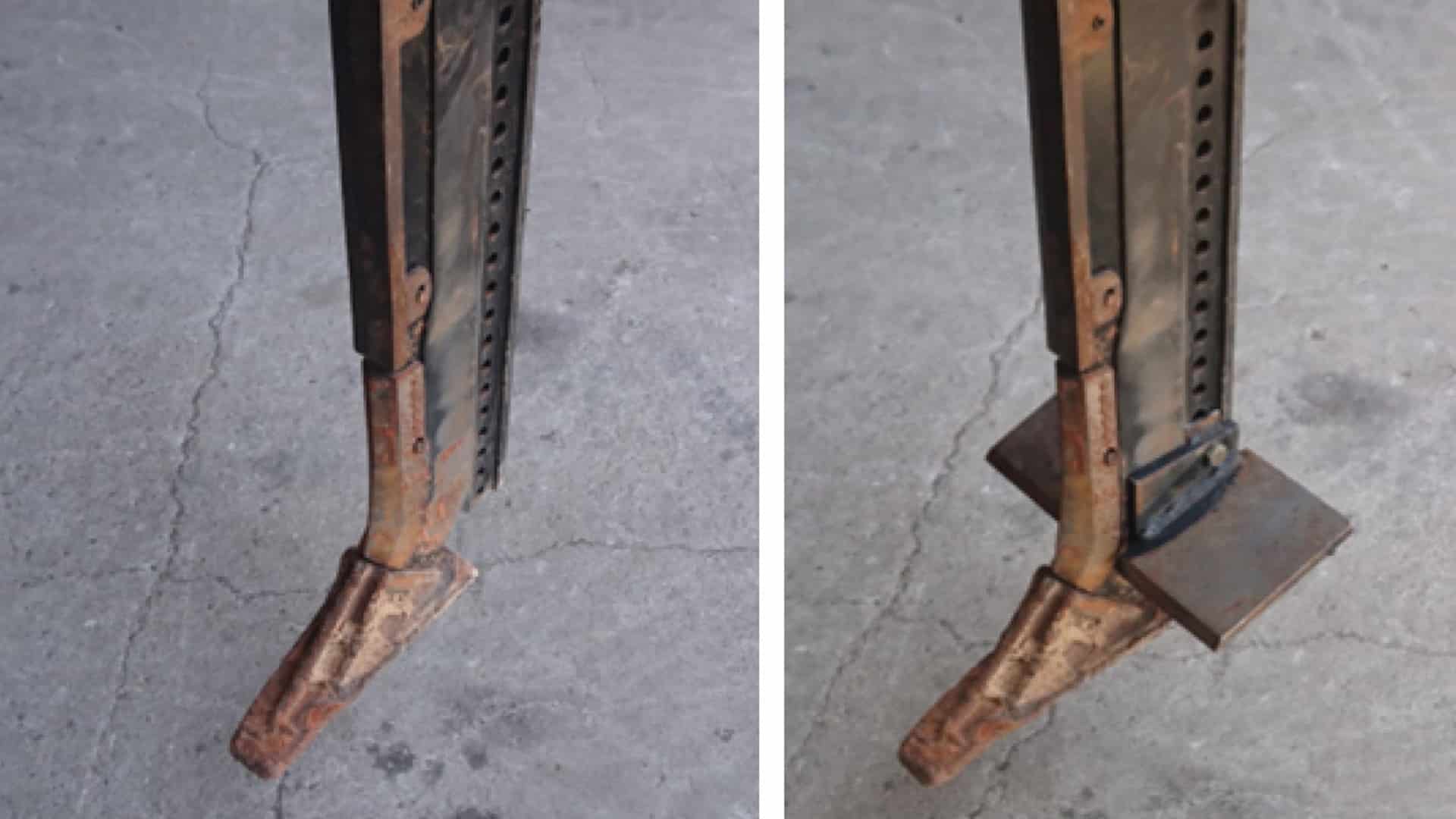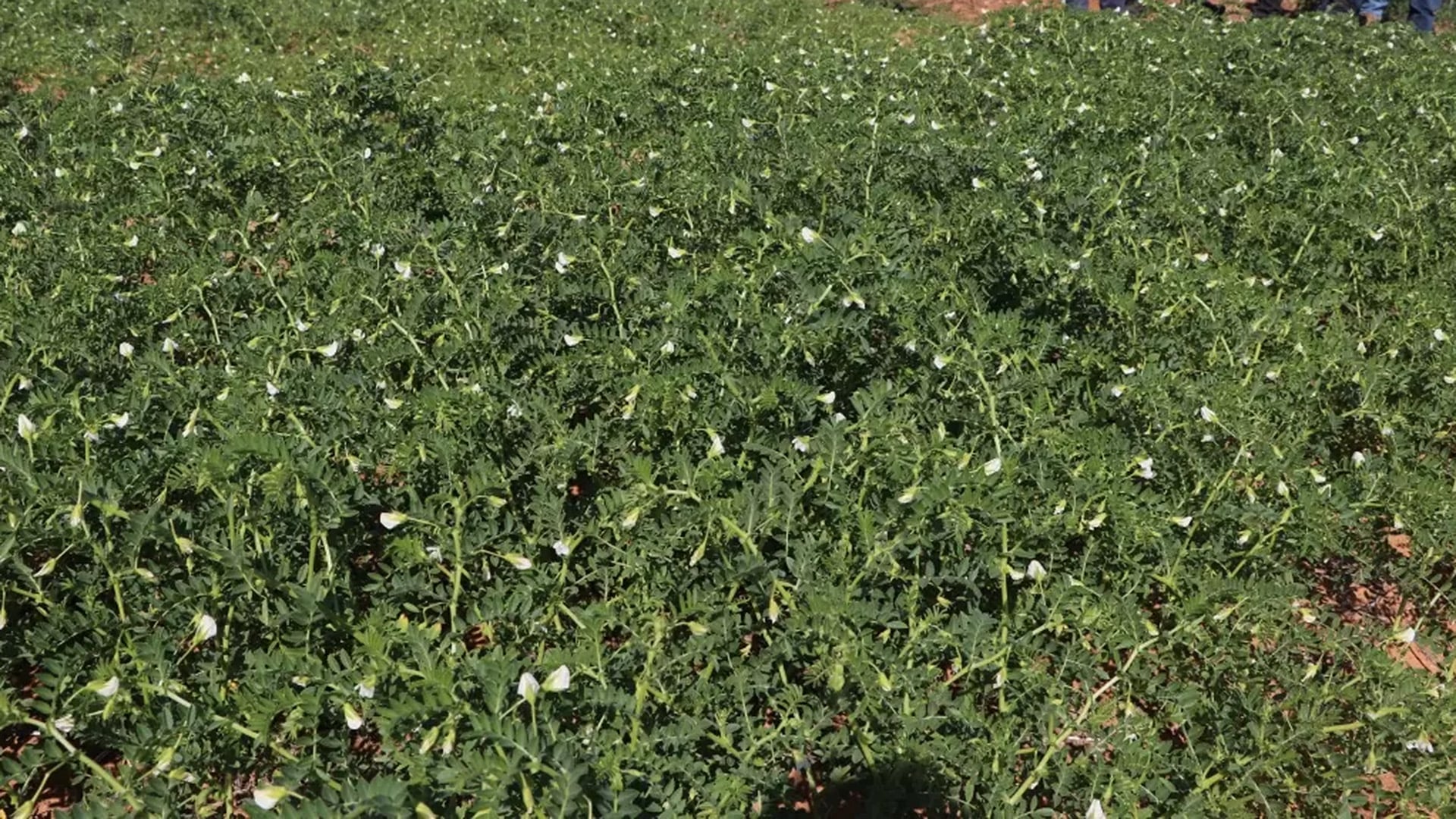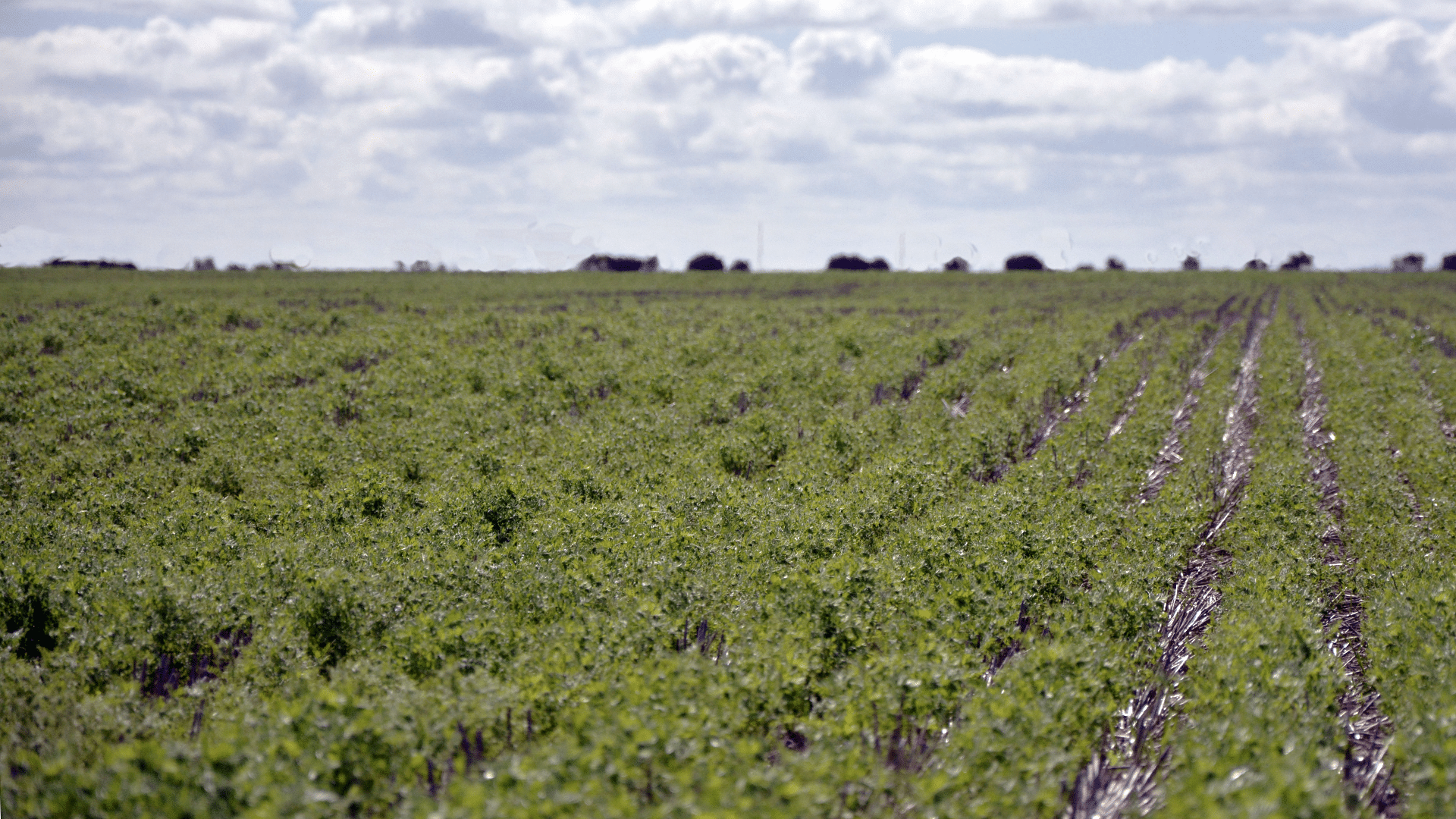START
FINISH
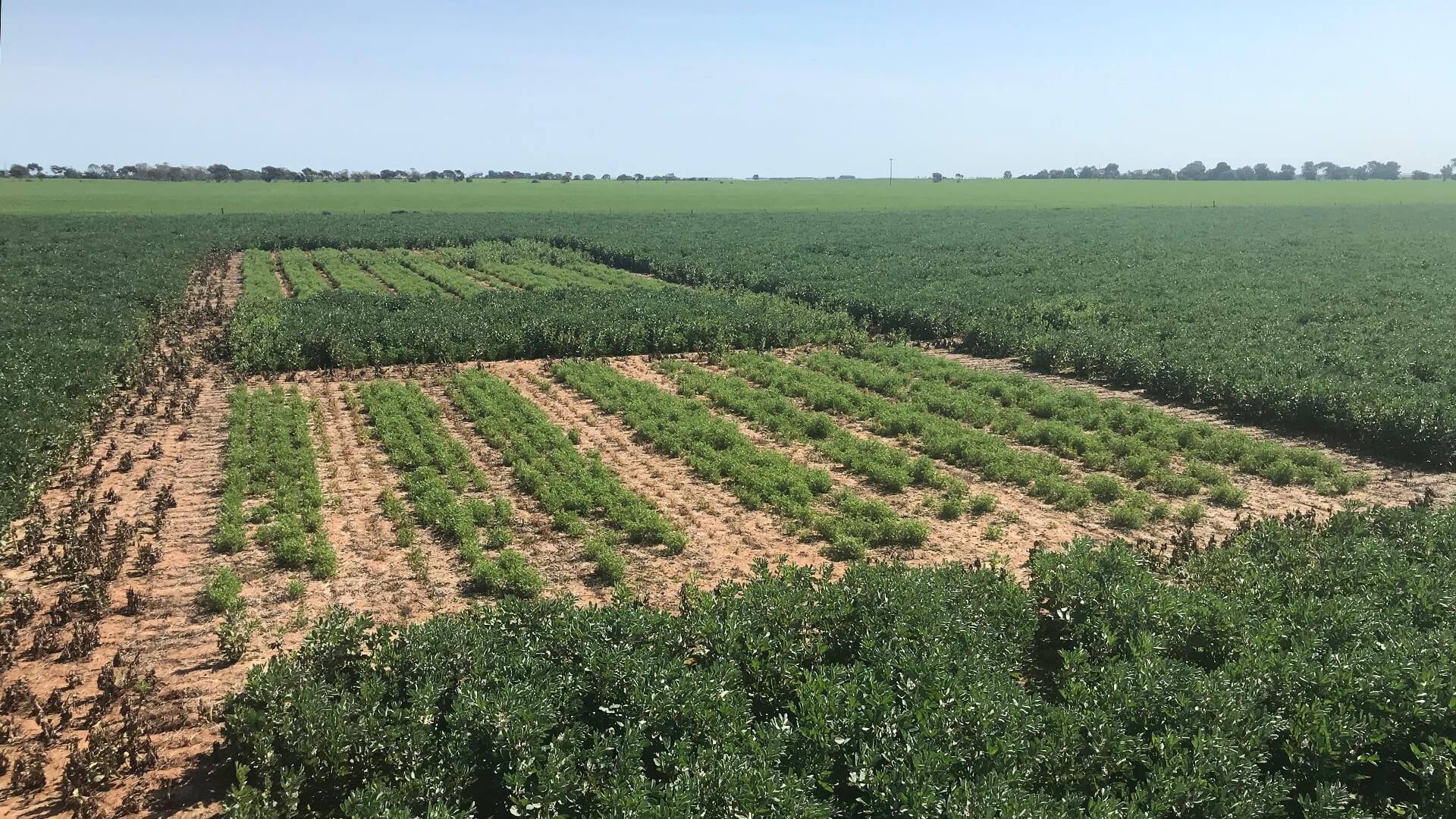
Summary
Various ripping machines and ripping depths were investigated for their impact on waterlogging and surface acidity when growing lentils at Mallala and Stockyard Creek.
Generally, deep ripping increased surface soil pH but lentil yields were reduced due to increased electrical conductivity (Ec) levels in the root zone.
Wet conditions during June and July filled the soil profile, masking any improvement in infiltration rates. However, a dry September-October highlighted reduced moisture retention and growth rates were negatively impacted during this period.
Background
Growers in the Lower Mid North struggle to achieve satisfactory lentil yields on certain soils, where low surface pH and a tendency for waterlogging can impact results.
These soils are characterised by low pH in the surface soil, alkaline pH at depth and poor infiltration. The hypothesis being tested was that deep ripping to break up and blend the soil could correct these conditions and improve lentil growth.
Research Aims
The main aim of this project was to investigate the impact of ripping depths and techniques on soils only marginally suitable for lentils, in an effort to improve their lentil production.
In The Field
Trial sites were established at Mallala and Stockyard Creek, and a site at Lower Light that had been ripped in 2020 was also included for comparison.
Sites were ripped with Agroplow, Bednar and “Liaway” (farm-built) machines at a depth of 15, 30 and 60 centimetres, with nil treatment replicates as a control.
Plot preparation (breaking up clods) was excellent and sowing proceeded on time with good early establishment.
Pre- and post-sowing soil tests were completed, along with three biomass assessments during the growing season.
Results
Mallala
This site included a 100cm treatment which resulted in the lowest yield. Soil testing showed this treatment did not change soil pH but did increase chloride and Ec levels, leading to salt symptoms in the lentils.
Waterlogging was decreased by deeper ripping however soil moisture storage was also reduced, which negatively impacted growth during drier weather through September-October.
Ripping at 30cm resulted in higher yields than the 15cm or 60cm treatments, but ripping yields remained below the corresponding nil treatment. At 60cm the Agroplow inclusion plates became effective, burying topsoil and raising the topsoil pH but also removing nutrients and crop residues from the topsoil.
Stockyard Creek
Deeper ripping tended to correspond to lower yield at this site, largely explained by a change in Ec. Post-harvest soil tests showed soil pH was increased by the Agroplow at 30cm and 60cm, and by the Bednar at 60cm, although ripping at depth also increased Ec.
The nil treatment replicates consistently out-yielded the ripping trials.
The result shows ripping before planting lentils on this soil will reduce yield in the first year. While deep ripping can raise soil pH, changes to other yield drivers such as Ec appeared to offset the pH benefit on this soil type.
Lower Light
This site was ripped to 35cm with the Liaway machine in 2020 and had settled and retained residue from the 2020 crop. The site did not display waterlogging or salt symptoms during the 2021 season. Ripped replicates showed increased soil pH and lentil biomass compared to the nil treatment on this site.
Project Participants
Elders Rural Services: Michael Brougham, Johnathan Forrest
The Problem
Marginal lentil growing soils exhibit low surface pH and poor infiltration rates, resulting in poor plant performance.
The research
Deep ripping was investigated as a way of correcting the soil constraints and helping growers to improve lentil viability.
More information
Michael Brougham, Elders Rural Services
T: 0427 727 466
E: [email protected]
Value for Growers
There is strong local interest in methods for improving the subject soil type. The Mallala trial was visited twice with a total of 70 farmers attending the site. Stockyard Creek was visited by Owen Ag Bureau and Elders Agronomy groups, for a total of 50 farmers attending. A further 35 people from the Upper North Farming Systems group visited the site at the start of 2021.
The null results from deep ripping were communicated to local groups. As a result, growers may forego this expensive and disruptive intervention, while researchers can focus on investigating alternative strategies.

